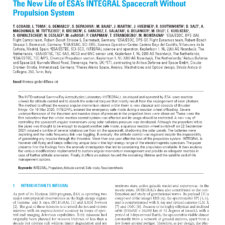COTS: The Inevitable March to the Van Allen Belts
£5.99
Nikki Antoniou, Alexander Hall, Thomas Clatworthy, Samantha Verhage-Rason (2023), JBIS, 76, pp. 371-380
Refcode: 2023.76.371
DOI: https://doi.org/10.59332/jbis-076-10-0371
The space industry is experiencing the perfect storm – lowering customer budgets, increased competition and pressure to become more sustainable and responsible. “The final frontier”needs to rapidly clean up its act, regulate and become more responsible. This perfect storm has had an interesting effect on the demands for satellite capability, especially for small satellite providers. It has led to customers making more demanding requirements, smaller budgets, shorter schedules, and more challenging orbital environments. The rapid drive to get technology to market is creating a gradual shift away from “fully space qualified” EEE parts for low-cost missions – even for harsh LEO environments – due to their high cost and long qualification time before they reach the market. By developing “reliable COTS” systems, specifically designed for harsher LEO environments, satellite providers are able to significantly cut costs, offer customers the flexibility they need and also stay at the crest of the technology wave. Achieving this is not an easy feat – significant design effort and quality control needs to be applied to ensure safe operations within these harsh environments, to both preserve the space environment from debris and to ensure a return on investment though increased system lifetimes.
Keywords: Space Sustainability, Radiation, COTS, High LEO, Low Cost





